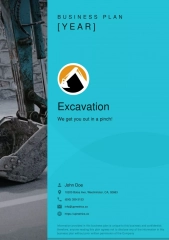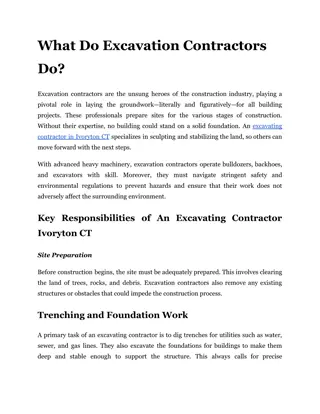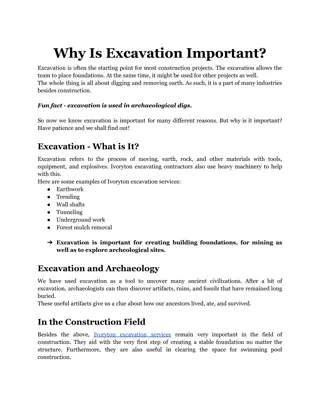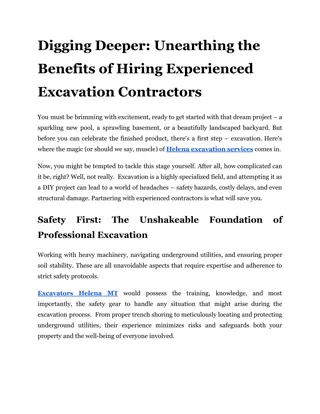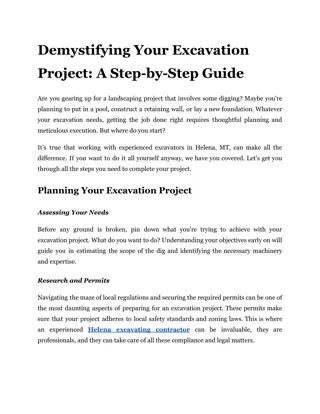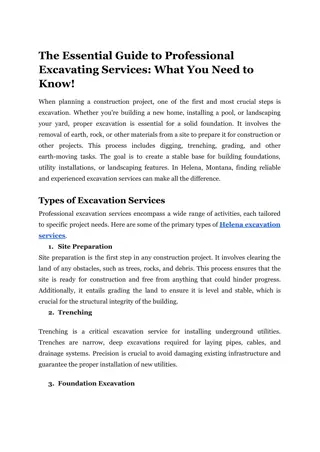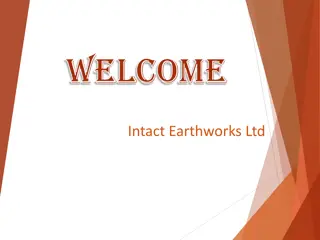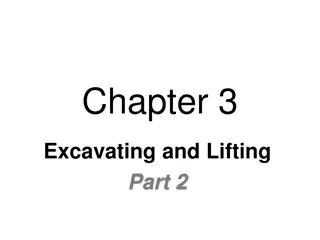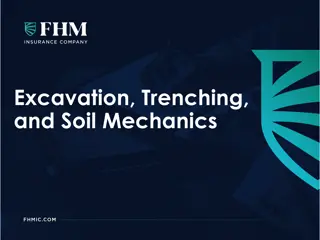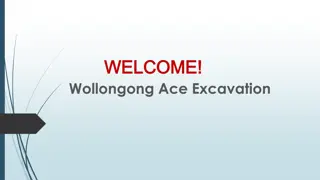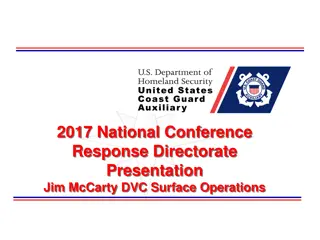Comprehensive Guide to Excavation Safety Practices
In this comprehensive guide, you will learn about excavation requirements, hazards, damage prevention strategies, soil backfilling techniques, trench preparation, and much more. The content covers essential topics such as safety tasks required by OSHA and CGA, identifying excavation hazards, preventing damage during excavation, and preparing trenches according to guidelines. Engage in practical activities and discussions to enhance your understanding of excavation safety practices.
Download Presentation

Please find below an Image/Link to download the presentation.
The content on the website is provided AS IS for your information and personal use only. It may not be sold, licensed, or shared on other websites without obtaining consent from the author. Download presentation by click this link. If you encounter any issues during the download, it is possible that the publisher has removed the file from their server.
E N D
Presentation Transcript
Introduction Review online course content. Review questions. 2
Workshop Objectives Participate in discussions, demonstrations, and hands-on activities that will enable you to: Discuss how damage prevention programs, best practices, techniques, excavation standards, and inspection requirements used by qualified personnel. Apply One-Call notification procedures, OSHA requirements, and best practices as needed on the job. Explain how and why to monitor an area for settlement during and after excavation activities. Verify system integrity during and after excavation activities. Recognize and react to abnormal operating conditions. 3
Excavation Requirements Best practices and required safety tasks required by OSHA and CGA (Common Ground Alliance) Excavation Points One-Call Center Positive/verified locates Activity Worksheet #1 4
Excavation Hazards Key points about excavation hazards Locating buried facilities Shock hazards Cave-ins Diverting water from excavation site Activity Worksheet #2 5
Excavation Hazards Locating and Marking Facilities Establishing excavation points How to: White line an excavation Locate and mark buried utilities with color codes Activity Worksheet #3 Activity Worksheet #4 6
Damage Prevention How to prevent damage during excavation by using: Best safety practices Monitoring excavation activities Complete and proper documentation System patrols Proper and frequent inspections Activity Worksheets #5, #6, #7 7
SOIL Soils used to backfill Testing soil Unified Soil Classification Backfilling using appropriate tools and restoring the property Activity Worksheet #8 8
Trench Preparation Trench width and depth requirements Buried main location Guidelines for service main installation Covering a buried pipe the right way Trench padding Cathodic protection system Activity worksheet #9 9
Backfill Process External load of backfill Pipe installation Degree of compaction Types of backfill used Following engineering specifications Site restoration Activity worksheet # 10 10
Compaction Compaction process and requirements Affecting factors Field density tests Sand cone Rubber balloon Nuclear gauge Soil compaction meter Activity worksheet #11 11
Sources Occupational Safety and Health Administration (OSHA) Compressed Gas Association (CGA) US Department of Transportation (FHWA) Proctor Test (adopted by the American Association of State Highway and Transportation Officials [AASHTO]). 12
Code of Federal Regulations Code of Federal Regulations: 192.327 Cover. 192.361 Service lines: Installation. 195.248 Cover over buried pipeline 192.614 Damage prevention program. 195.442 Damage prevention program. 195.452 Pipeline integrity management in high consequence areas. 1926.650 Scope, application, and definitions applicable to open excavations. 1926.651 Specific excavation requirements. 1926.652 Requirements for protective systems. 192.703 General. 192.706 Transmission lines: Leakage surveys. 192.721 Distribution systems: Patrolling. 192.723 Distribution systems: Leakage surveys. 192.935 What additional preventive and mitigative measures must an operator take? Proctor Test (adopted by the American Association of State Highway and Transportation Officials [AASHTO]). 13
Open Discussion Questions Comments 14


